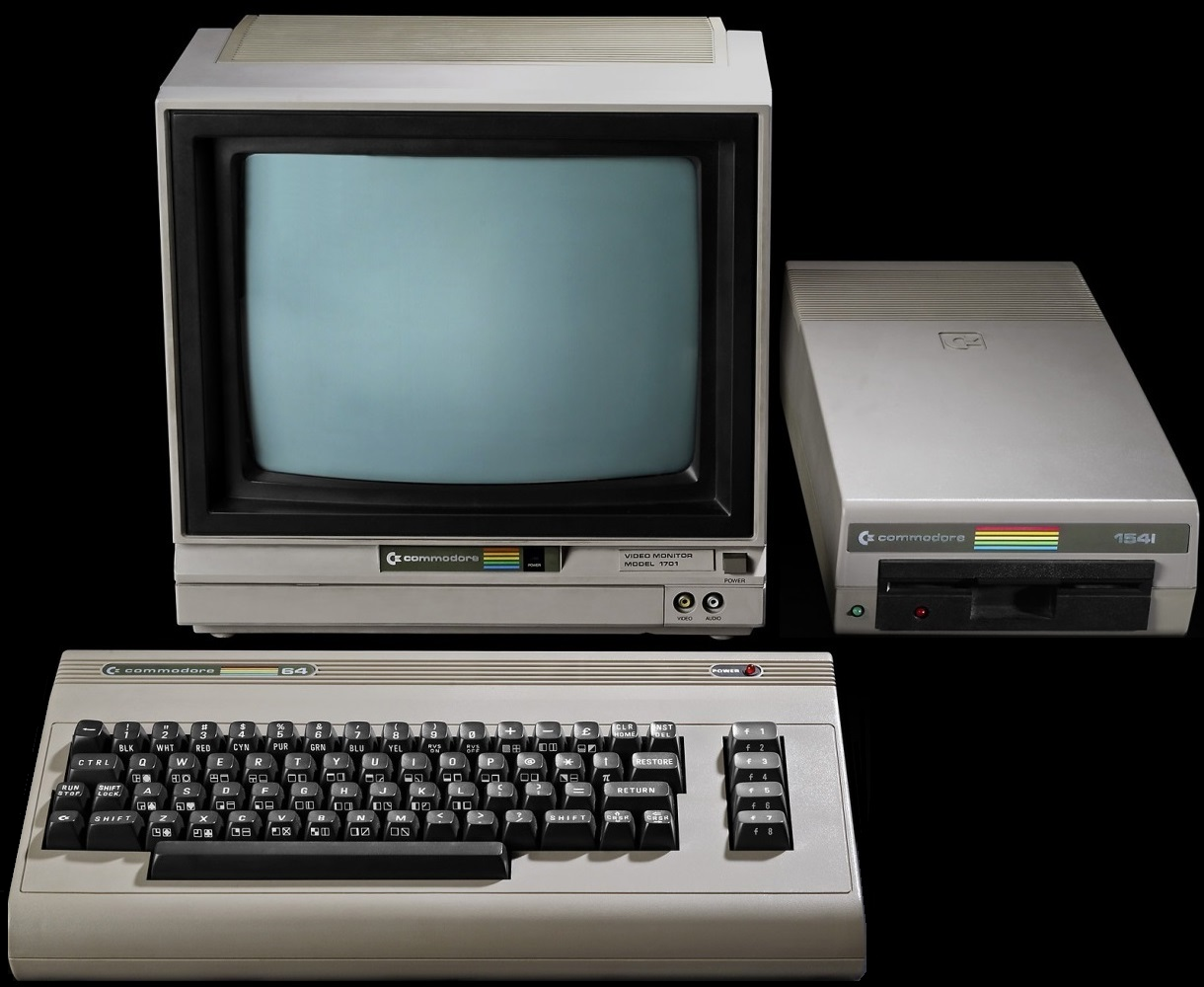Description
Commodore PET 2001 Series
Release 1977 | End of produktion 1979
Technical Data
The keyboard has a letter and a number field. A datasette is used to store data and programs. The CPU is the microprocessor 6502 with 8 bit data and address bus and 1 MHz clock frequency from MOS Technology. Depending on the variant, 4 kB or 8 kB SRAM were used, which could be extended up to 32 kB. In Europe, only the 8 kB version with its own MOS 6550 chip from MOS Technology was initially sold. Due to heat problems, third-party chips were used in a later version.
The lowest kilobyte is occupied by the system and the integrated Basic. The area above was at the free disposal of the user, this also applies to the successor versions. The Microsoft / Commodore ROM-BASIC is also the operating system and is located in a 14 kB ROM. Operating system extensions can be retrofitted in three free ROM sockets with 4 kB each. The Commodore PET 2001 Series has a built-in power supply.
Interfaces
An IEEE-488 interface (international IEC-625 bus) for the connection of floppy disk drives and printers is implemented. Under the designation IEEE 488 is a versatile bus system, which is mainly used in the electronic measuring technique as a bus system between the measuring instruments. It corresponds to the General Purpose Interface Bus GPIB, which was standardized in the USA in the 1970s under the designation IEEE 488.
The IEC-625 bus is the international standard designation for an external parallel data bus, which is primarily used to connect measuring instruments and peripheral devices such as plotters and printers to a computer, whereby up to 15 devices can be connected. The maximum speed of the standard version is 1 MByte/s.
The user port is a freely available parallel interface of many Commodore computers of the 8-bit series. The user port is integrated as a board connector directly into the main board of the computer. With additional software the Centronics interface and a TTL monitor output is possible.
The video part is implemented in discrete TTL technology on the main board, the output is in TTL level, which is also led out to the user port and is provided with television compatible NTSC timing. An integrated 9 inch black and white monitor and later also a black and green monitor with 25 lines of 40 characters is included. The successor variants CBM 4000 and CBM 8000 were also available with a 12 inch monitor from 1979. The device does not need a fan and is silent in operation as long as the datasette is not in use.
Commodore VC20
Release March 1981 | End of production June 1984
Technical data
On the motherboard the processor MOS 6502B with a clock frequency of 0.973 MHz is used. The main memory (RAM) has 5 kB in the basic version and can be extended up to 64 kB. 3.5 kB can be freely available to the user under Basic. The 20 kB ROM is located in Basic V2.0 and the VC20 has its own operating system. The Video Interface Chip VIC 6561 can display 22 x 23 characters in text mode and a maximum of 176 x 184 in graphic mode via character definition. Of the 16 colors, 8 can be used for characters. Furthermore the VIC 6561 contains a sound unit with 3 voices, mono, 3 octaves, plus sound generator. The keyboard is a QWERTY with 66 keys.
Interfaces
As external drives, the models 1540, 1541, 1570, 1571 and 1581 can be directly connected to the serial bus. Inputs and outputs: 1x IEC (serial), 1 x user port, 1 x module port, 1 x audio/video, 1 x RF via external modulator, 1 x datasette, 1 x joystick.
On the mainboard the processor MOS 6502B with a clock frequency of 0.973 MHz is used. The main memory (RAM) has 5 kB in the basic version and can be extended up to 64 kB. 3.5 kB can be freely available to the user under Basic. The 20 kB ROM is located in Basic V2.0 and the VC20 has its own operating system. The Video Interface Chip VIC 6561 can display 22 x 23 characters in text mode and a maximum of 176 x 184 in graphic mode via character definition. Of the 16 colors, 8 can be used for characters. Furthermore the VIC 6561 contains a sound unit with 3 voices, mono, 3 octaves, plus sound generator. The keyboard is a QWERTY with 66 keys. As external drives the models 1540, 1541, 1570, 1571 and 1581 can be connected directly to the serial bus. Inputs and outputs: 1x IEC (serial), 1 x user port, 1 x module port, 1 x audio/video, 1 x HF via external modulator, 1 x datasette, 1 x joystick.
Commodore C64
Release January 1982 | End of production 1994
The Commodore 64 is an 8-bit home computer with 64 KB of memory. On the mainboard the processor MOS 6510/8500 works with a clock frequency of 1.023 MHz for the NTSC version or 0.985 MHz for the PAL version. It is equipped with a working memory of 64 KB RAM and 20 KB ROM. The graphics chip used is the VIC II with 320 × 200 pixels resolution, 16 colors and sprites. The sound is generated by the SID 6581 (3× Osc., 4× Wave, Filter, ADSR, Ring). The operating system is Commodore Basic V2, GEOS 64.
Abbildungen
Commodore PET 2001 Series Personal Computer
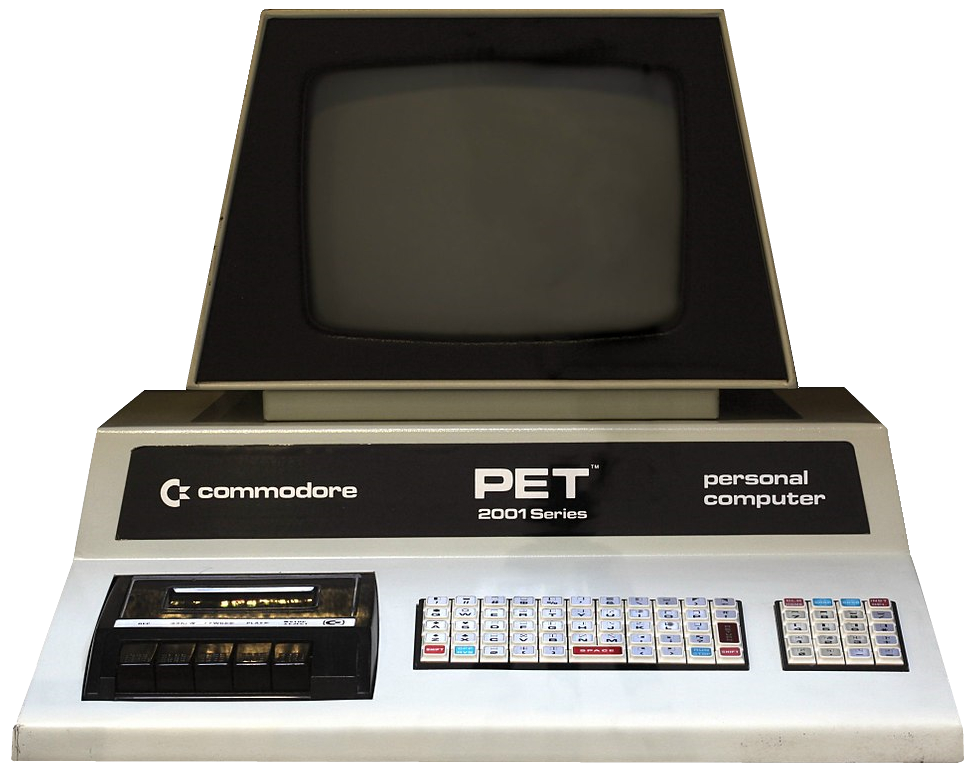
Commodore PET 2001 Series Professional Computer
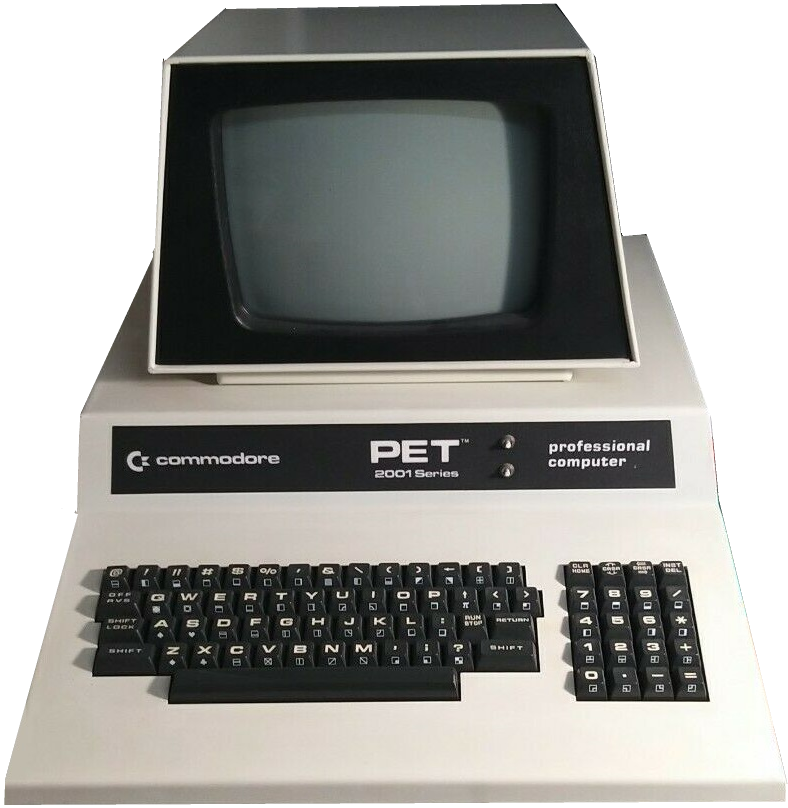
Commodore VC20
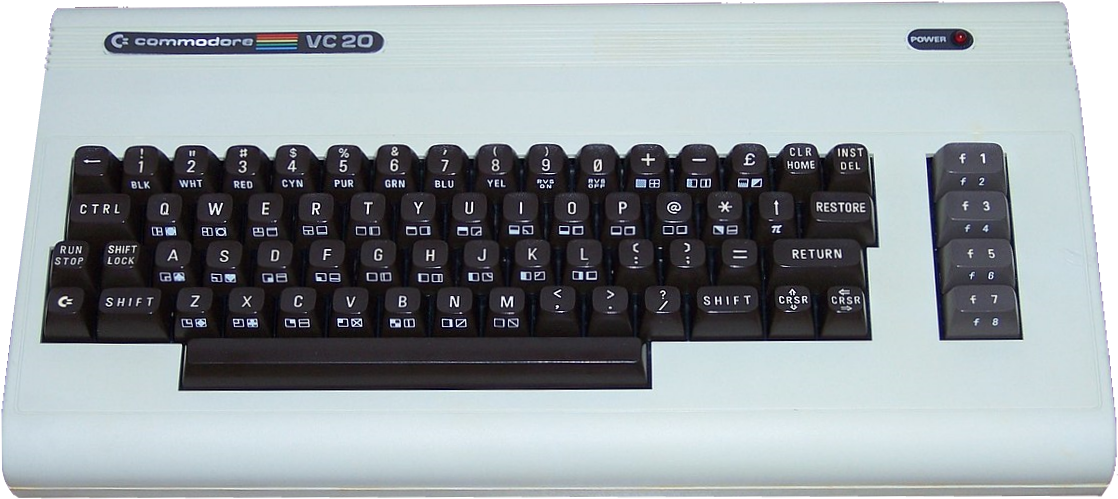
Commodore C64
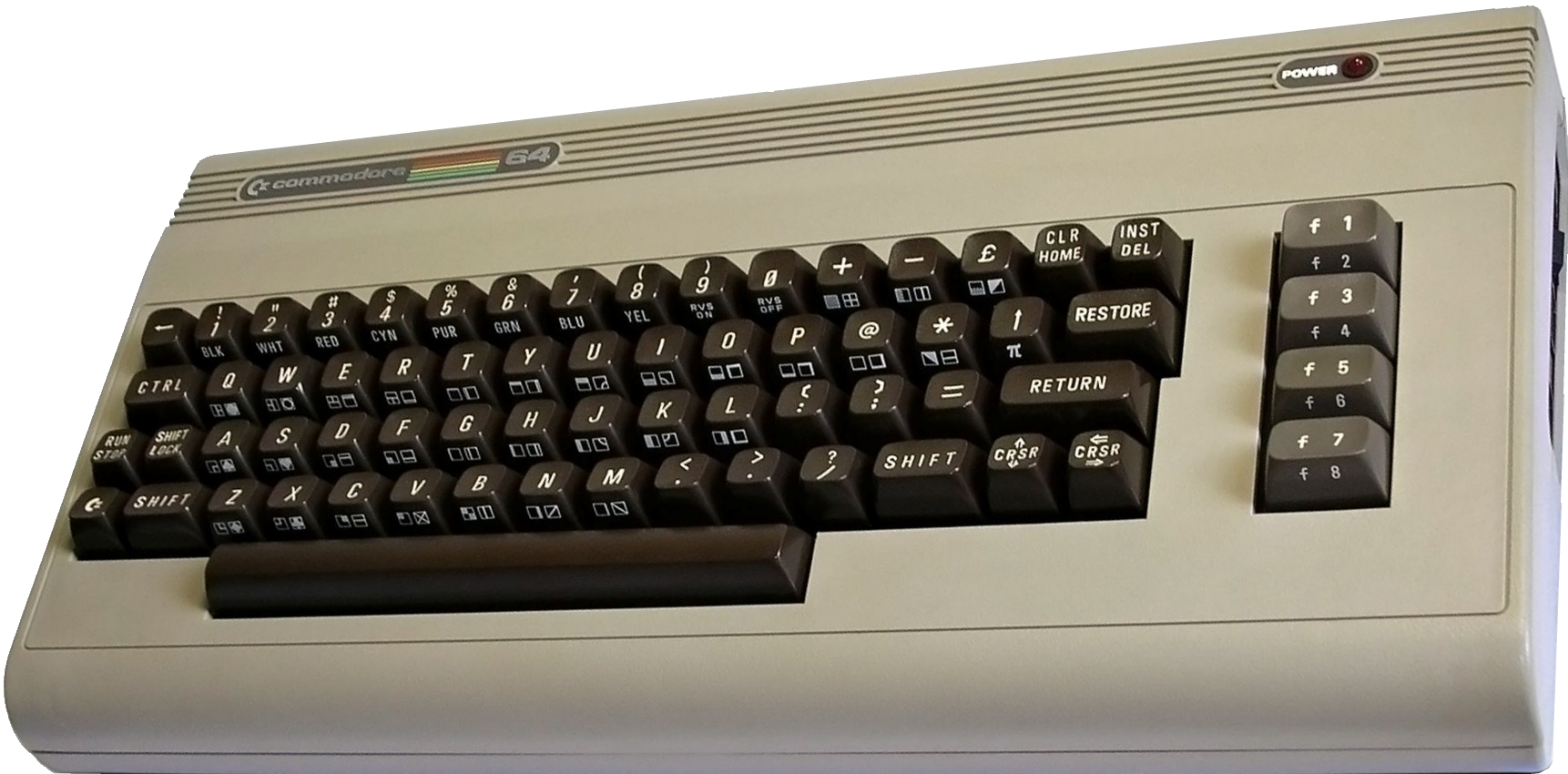
Commodore C64 Mainboard

Commodore C64 System
